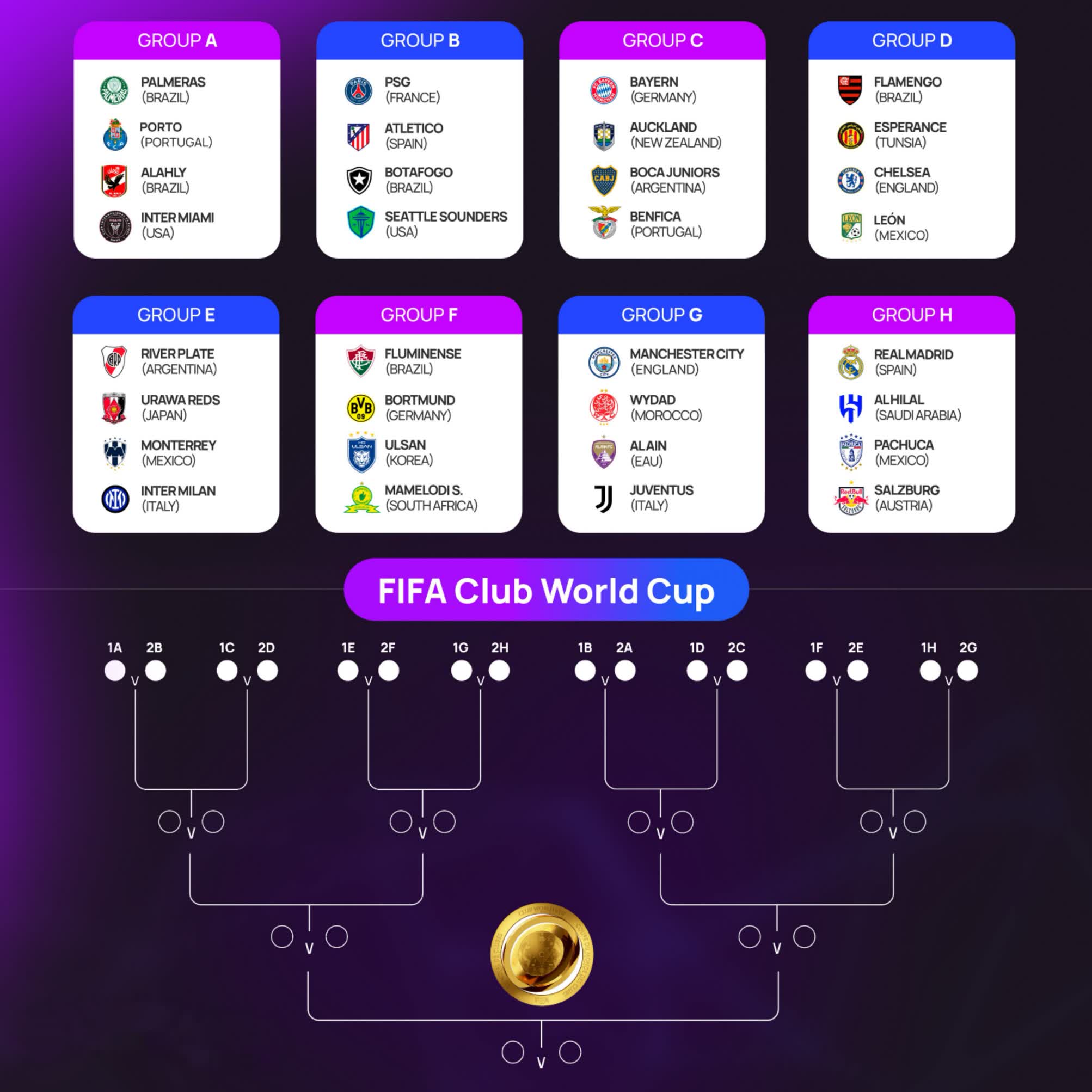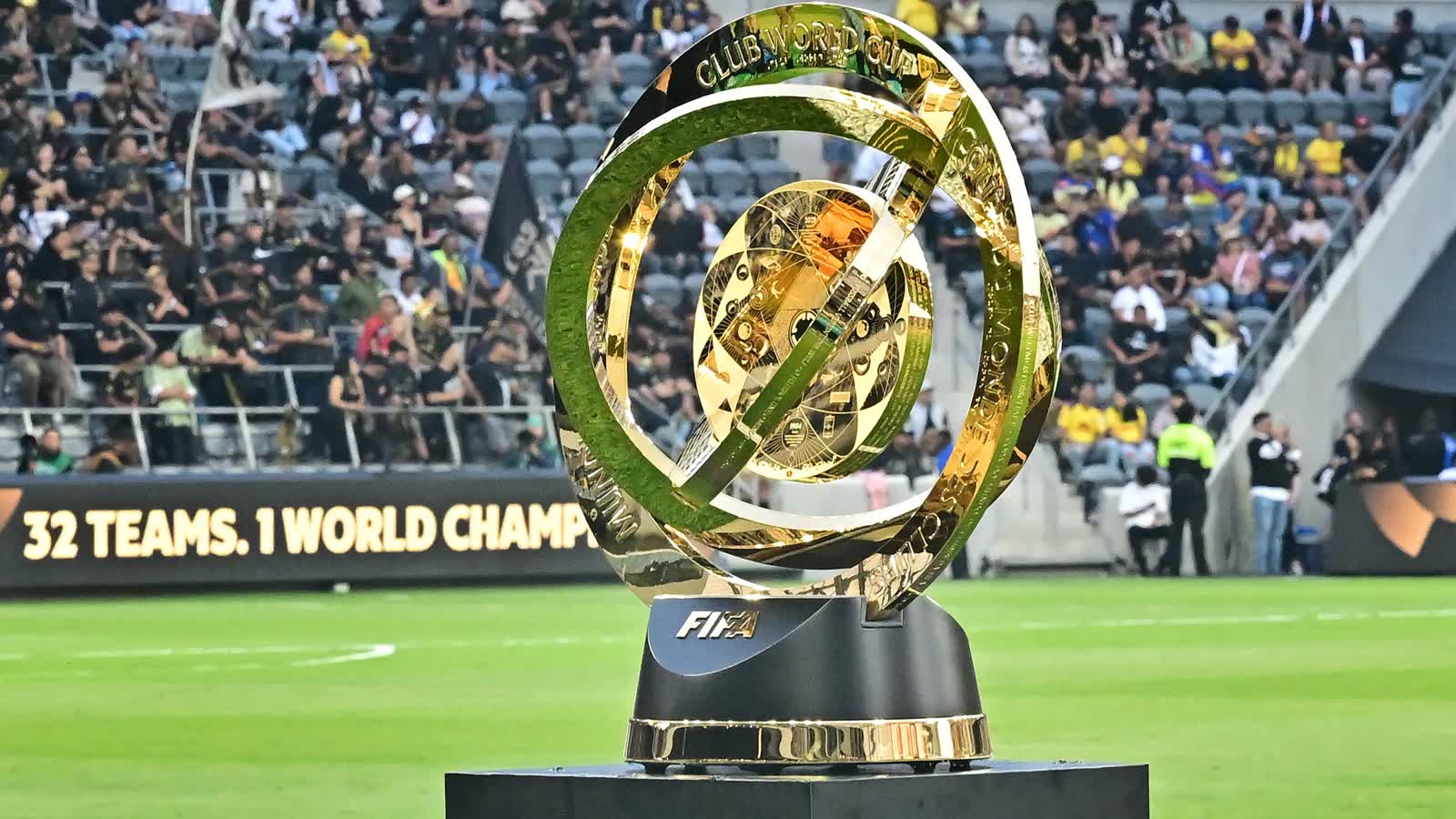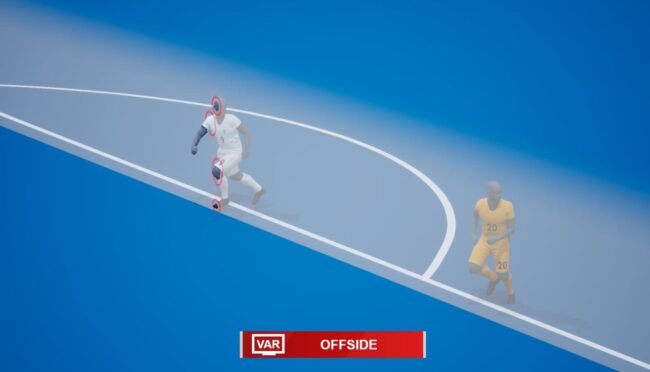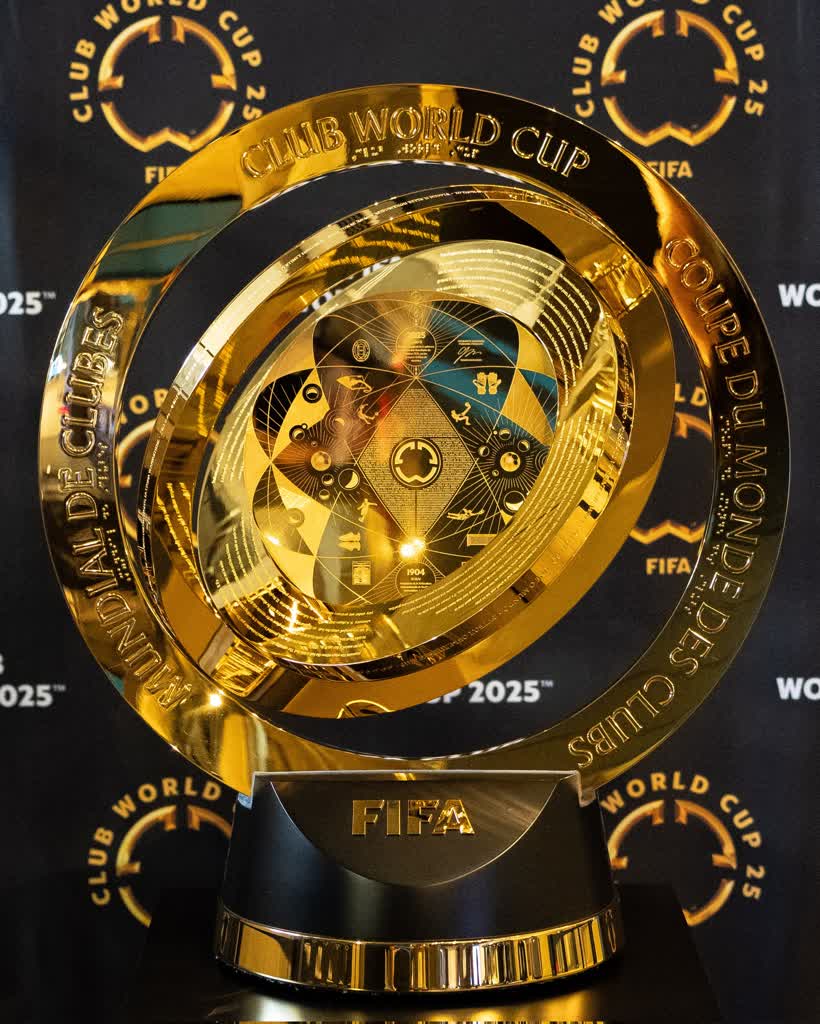The 2025 FIFA Club World Cup is the 21st edition of the international club football tournament organized by the sports governing body, FIFA. From inception, the competition is participated in by reigning continental champions. But this year’s edition is the first of the EXPANDED FORMAT featuring 32 teams, including the winners of the four previous continental championships.
The United States of America will be hosting the 2025 FIFA Club World Cup from the 14th of June to the 13th of July, 2025.
In the article, FootballOrbit brings a guide to the tournament.
Introduction
Initially, the FIFA Club World Cup is held annually in December and was limited to the winners of continental club competitions. From 2016, FIFA started making moves to expand the tournament to 32 teams, rescheduling it to June/July, and have it be played every four years — to be more balanced and attractive to broadcasters and sponsors.
Moreso, the Club World Cup will replace the FIFA Confederations Cup (competed by national teams that won their respective continental tournaments). The first edition was slated to be hosted by China in 2021, but got canceled because of the COVID-19 pandemic.
In June 2023, FIFA confirmed that the United States would host the 2025 FIFA Club World Cup as a preliminary to the 2026 FIFA World Cup.
Real Madrid hold the record for most FIFA Club World Cup titles, having won the competition 5 times. Spanish clubs have won the tournament 8 times, the most for any nation. England has the largest number of winning teams, with four clubs having won the tournament.
Furthermore, the defending champions are Manchester City, who defeated Brazilian side Fluminense 4-0 in the 2023 final.
Allocation of Slots for the 2025 FIFA Club World Cup
Allocation of slots for the tournament was based on a set of objective metrics and criteria. UEFA was awarded the most slots with 12, while CONMEBOL was given the second most with 6. The AFC, CAF, and CONCACAF were all given 4 slots each, while the OFC and the host nation were given one apiece.
Criteria
CONMEBOL and UEFA (more than four slots): access for the winners of the confederation’s top club competition between 2021 and 2024, with additional teams to be determined by a club ranking of the four-year period.
AFC, CAF, and CONCACAF (four slots each): access for the winners of the confederation’s top club competition between 2021 and 2024.
OFC (one slot): access for the highest-ranked club among the winners of the confederation’s top club competition between 2021 and 2024.
Host country (one slot): Winners of the 2024 MLS Supporters’ Shield.
Furthermore, if a club wins two or more seasons of its confederation’s top club competition, additional teams will be determined by a club ranking over the four-year period.
Moreso, a restriction of two clubs per association will be applied, with the exception of champion clubs if more than two clubs from the same association win their confederation’s top club competition.
The calculation method for the four-year club rankings within each confederation was based on the teams’ performance in their respective continental tournaments during seasons completed between 2021 and 2024.
Participating Clubs
Asia (AFC): Al-Hilal, Urawa Red Diamonds, Al-Ain, Ulsan HD.
Africa (CAF): Al Ahly, Wydad AC, Espérance, Mamelodi Sundowns.
North, Central America and Caribbean (CONCACAF): Monterrey, Seattle Sounders, Pachuca, Los Angeles FC.
South America (CONMEBOL): Palmeiras, Flamengo, Fluminense, Botafogo, River Plate, Boca Juniors.
Oceania (OFC): Auckland City.
Europe (UEFA): Chelsea, Real Madrid, Manchester City, Bayern Munich, PSG, Inter Milan, FC Porto, Benfica, Borussia Dortmund, Juventus, Athletico Madrid, RB Salzburg.
Host (USA): Inter Miami.
GROUPS

The teams are drawn into eight groups of four, with each team playing three group stage matches in a round-robin format. The top two teams from each group advance to the knockout stage, starting with the round of 16 and culminating with the final.
Group A: Palmeiras, Porto, Al Ahly, Inter Miami.
Group B: PSG, Athletico Madrid, Botafogo, Seattle Sounders.
Group C: Bayern Munich, Auckland City, Boca Juniors, Benfica.
Group D: Flamengo, Espérance, Chelsea, Los Angeles FC.
Group E: River Plate, Urawa Red Diamonds, Monterrey, Inter Milan.
Group F: Fluminense, Borussia Dortmund, Ulsan HD, Mamelodi Sundowns.
Group G: Man City, Al Ain, Wydad, Juventus.
Group H: Real Madrid, Al-Hilal, Pachuca, RB Salzburg.
Venues
The matches of the 2025 FIFA Club World Cup will be played in 12 venues across 11 host cities in the United States.
The venues are as follows:
(1) Hard Rock Stadium in Miami Gardens, Florida (opening match),
(2) Audi Field in Washington D.C.;
(3) Lumen Field in Seattle, Washington;
(4) The Rose Bowl in Pasadena, California;
(5) TQL Stadium in Cincinnati, Ohio;
(6) Bank of America Stadium in Charlotte, North Carolina;
(7) Mercedes-Benz Stadium in Atlanta, Georgia;
(8) Lincoln Financial Field in Philadelphia, Pennsylvania;
(9) Geodis Park in Nashville, Tennessee;
(10) Camping World Stadium in Orlando, Florida;
(11) Inter&Co Stadium in Orlando, Florida; and
(12) MetLife Stadium in East Rutherford, New Jersey (Final).
2025 FIFA Club World tournament Prize money
The 2025 FIFA Club World Cup features a club football tournament record prize money, as a whopping sum of $1 billion will be shared between the 32 participating clubs!
Likewise, the winner of the tournament will earn up to $125 million, a significant increase in financial rewards compared to previous editions.
In addition to the prize money for the participating teams, a solidarity investment program has a target of an additional $250 million being provided to club football across the world, fostering development and inclusivity in global football.
The distribution model for the 2025 FIFA Club World Cup is as follows:
Sporting performance pillar ($475 million): Increasing payouts based on performance in the tournament.
Group stage (three matches): $2 million per win; $1 million per draw;
Round of 16: $7.5 million;
Quarter-final: $13.125 million;
Semi-final: $21.0 million;
Finalist: $30.0 million;
Winner: $40.0 million.
Participation pillar ($525 million): Guaranteed payments to all 32 clubs (amounts are per club).
Europe: $12.81–38.19 million (determined by a ranking based on sporting and commercial criteria);
South America: $15.21 million;
North, Central America & Caribbean: $9.55 million;
Asia: $9.55 million;
Africa: $9.55 million;
Oceania: $3.58 million.
Trophy

For the 2025 FIFA Club World Cup, a new trophy was created in collaboration with Tiffany & Co. The new trophy features a 24-carat gold-plated finish, intricate laser-engraved inscriptions on both sides including a world map and the names of all 211 FIFA member associations and the 6 confederations.
These icons that capture football’s traditions, including symbols of stadiums and equipment, and engravings in 13 languages and braille.
Furthermore, space is available to laser-engrave the emblems of the winning clubs for 24 editions of the tournament. The trophy can transform from a shield into a multifaceted and orbital structure.
Newly introduced technologies at the 2025 FIFA Club World Cup
Body Cam on Referees
Referees at the FIFA Club World Cup 2025 will wear body cameras during matches. The small device, attached to their communication earpiece, will capture the live action unfolding in front of them to the broadcast and officiating teams — offering unprecedented insight into on-field decisions.
One of the main aims of this innovations is to determine if this new camera angle can improve the experience for viewers.
Furthermore, FIFA will use the findings from the tournament to create future guidelines for the use of such cameras in soccer.
Advanced semi-automated offside using AI

An upgraded semi-automated offside system — using AI, multiple cameras, and ball sensors — will be introduced to speed up decisions while keeping VAR involved for tight calls.
Using video feed from 16 cameras, a sensor inside the ball and AI, the system tracks players’ positions and the ball, providing automated, real-time alerts to match officials in the event of clear offsides.
However, for complex offside situations, VAR will still be needed to validate the information provided by the system before the decision is taken.
Officials hope this new mechanism will help reduce the time in decision-making. The system will likely see the flag raised earlier for offside and reduce cases of play continuing after a clear offside, as opposed to the common VAR reviews which only comes later after an action.
Additionally, footage of VAR-based offside reviews will be shown to the spectators inside the stadiums on big screens.
Tablets for substitution
Another new exciting feature at the 2025 Club World Cup will be the introduction of a substitution tablet, which will replace traditional paperwork and manual communication; in order to streamline and organise the substitution process.
Each team will receive a tablet before kick-off to manage requests digitally, ensuring that everyone who needs this information is aligned and providing a clear overview of remaining substitutions.



